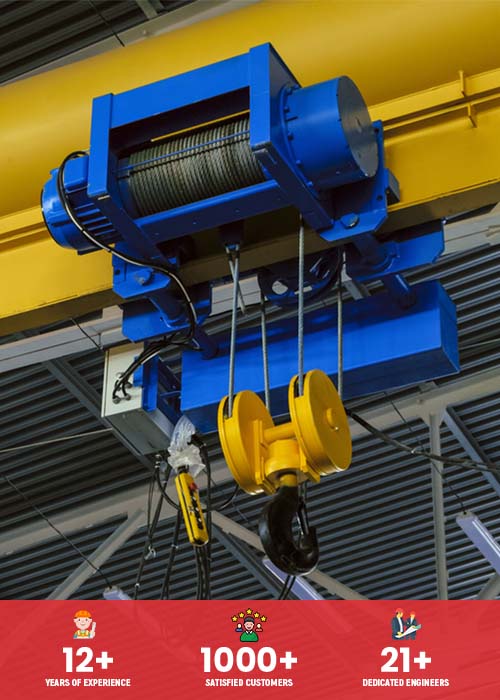Types of Hoist Cranes and which is best for your business?
Hoists are used in rigging to support hanging loads such as cargo, tools for construction, and automotive engines, as well as to raise or transport heavy things. These essential lifting devices are used in manufacturing facilities, logging camps, construction sites, and auto repair shops. They typically consist of a chain or rope wound around a drum or raise wheel. The majority of hoist kinds have a lengthy history. An essential tool for lifting tasks are hoists. They are not all constructed alike, though. Thus, if you want to buy wisely for your company, you need to be able to tell apart different kinds of hoists made by hoist crane manufacturers in India.
There are various types of hoist cranes available in the market and we will discuss different types of them so that you can decide which ones suit your business the best.
Different Types of Hoists

- Manual Hoists
Manual hoists are hand- or lever-operated lifting devices, sometimes referred to as chain falls. These kinds of hoists rely on a load chain for support and a hand chain to regulate raising and lowering. To raise or lower the products, the operator either pulls on either end of the hand chain or cranks a lever attachment.
Using hand hoists for lifting tasks has many advantages. To begin with, they are less expensive than motorised hoists and are suitable for a variety of lifting applications. In addition, manual hoists work well in non-electric environments.
- Electric Hoists
Chains or wire ropes are used by electric hoists, which run on electricity to raise or lower things. When raising or lowering their goods, the operator simply presses a button as opposed to manually turning a lever or tugging a chain. Whether you select an electric chain hoist, electric wire rope hoist, or electric belt hoist, the uses for these hoists differ.
- Hydraulic Hoists
Hydraulic hoists operate without a motor system, using an oil-based piston mechanism as opposed to conventional lifts. With a smaller motor, the piston enables the hoist to lift much greater loads. Boats are lifted into and out of the water by hydraulic hoists in the majority of shipyards and marinas. Additionally, they are able to load and unload shipping containers into adjacent trucks and storage facilities from ships.
- Piston Hoists
The fluid pressure moves these kinds of hoists in a linear fashion. It moves the force to a second point by applying force to one location in an incompressible liquid. Two pistons linked by an oil-filled hose power the process.
- Gear Hoists
Typically, a gear hoist consists of a set of gears that cooperate to elevate a load: a driving gear and one or more drive gears. These hoists are frequently used in the industrial, material handling, and construction industries because of their superior mechanical performance and ability to precisely raise large weights.
- Rotary Vane Hoists
Vane hoists have a cylindrical housing with internal rotor-mounted vanes or blades. The load can be raised or lowered by the vacuum created by the rotor’s rotation. In industries like material handling, packing, and automation where careful lifting with low damage risks is necessary, rotary vane hoists are frequently utilised.
- Pneumatic Hoists
Compressed air is used by pneumatic hoists to make lifting and hauling easier. These hoists can operate continuously without stopping because they have a 100% duty cycle. Because of this, they are perfect for heavy-duty, high-speed lifting applications where other hoists would probably not last. Air hoists are ideally suited for exceptionally long lifts where an electric motor would overheat due to their special characteristics.



